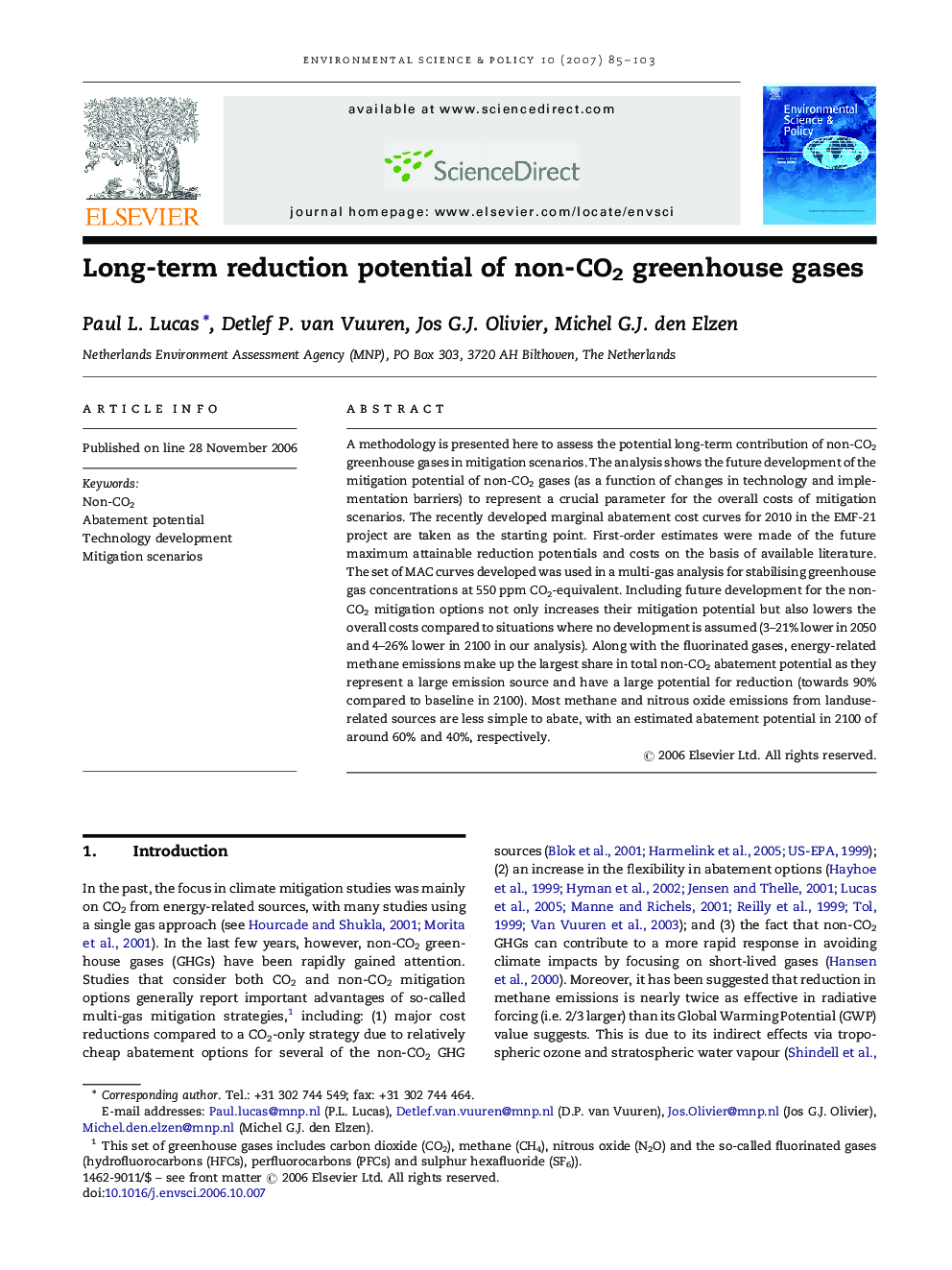| Article ID | Journal | Published Year | Pages | File Type |
|---|---|---|---|---|
| 1054008 | Environmental Science & Policy | 2007 | 19 Pages |
A methodology is presented here to assess the potential long-term contribution of non-CO2 greenhouse gases in mitigation scenarios. The analysis shows the future development of the mitigation potential of non-CO2 gases (as a function of changes in technology and implementation barriers) to represent a crucial parameter for the overall costs of mitigation scenarios. The recently developed marginal abatement cost curves for 2010 in the EMF-21 project are taken as the starting point. First-order estimates were made of the future maximum attainable reduction potentials and costs on the basis of available literature. The set of MAC curves developed was used in a multi-gas analysis for stabilising greenhouse gas concentrations at 550 ppm CO2-equivalent. Including future development for the non-CO2 mitigation options not only increases their mitigation potential but also lowers the overall costs compared to situations where no development is assumed (3–21% lower in 2050 and 4–26% lower in 2100 in our analysis). Along with the fluorinated gases, energy-related methane emissions make up the largest share in total non-CO2 abatement potential as they represent a large emission source and have a large potential for reduction (towards 90% compared to baseline in 2100). Most methane and nitrous oxide emissions from landuse-related sources are less simple to abate, with an estimated abatement potential in 2100 of around 60% and 40%, respectively.
